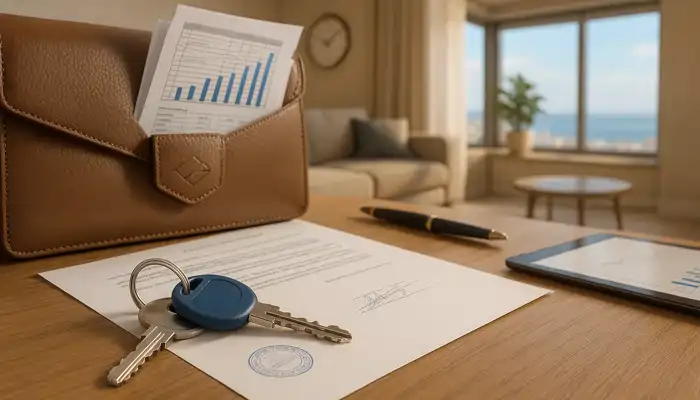Introduction
Flipping (flipping – the purchase of real estate with subsequent renovation and resale) in Spain represents an attractive yet complex investment model. Potential investors face several challenges: a high level of risk, the need to accurately calculate renovation expenses, choosing the right property, and promptly addressing sales issues. This article analyzes in detail the key aspects of flipping, identifies the main pain points for the potential reader, and offers practical solutions to overcome them.
What Flipping Is and Why It Is Relevant
Flipping is a strategy in which a property that requires improvements is purchased, renovation is carried out (reconstruction, updating of engineering systems, cosmetic repair) and the property is then sold at a higher price to generate profit. In Spain, this method is becoming increasingly popular, as it allows investors to take advantage of market opportunities when properties are sold at prices significantly below market value, especially in the case of bank-owned properties or real estate transferred to financial funds. However, to achieve success, it is necessary to consider a number of key factors and to be able to manage the risks.
Key Factors for Successful Flipping
1. Property Selection and Neighborhood Analysis
The main issue is the incorrect selection of the property. For successful flipping, it is crucial to consider the location of the property. Promising areas are those under development, where new infrastructure is being built, transport hubs, schools, and shopping centers are opening. Investing in properties located in such areas allows for an increase in value even with minimal renovation investments.
2. Accurate Cost Calculation and Budget Formation
Another challenge for beginner investors is improper expense planning. In flipping, it is necessary to take into account not only the cost of purchasing the property, but also renovation expenses, taxes, legal services, and marketing for the sale. It is recommended to form a reserve fund equal to 10–15 percent of the total budget to cover unforeseen expenses. Accurate calculations help avoid overspending and facilitate achieving the projected profit.
3. Renovation and Its Organization
The issue of managing renovation work is also one of the main pain points. A renovation of low quality or delays in deadlines can lead to a reduction in the final value of the property. To minimize these risks, it is necessary to work with reliable contractors who provide a detailed work plan with clearly established deadlines. It is crucial to conduct a comprehensive assessment of the property’s condition before starting the renovation: engineering systems, layout, materials – all of these factors influence the final profit.
4. Risk Management
Flipping is associated with a high level of risk. Potential risks include the inability to sell the property within the established timeframe, calculation errors leading to budget overruns, and external force majeure circumstances, such as an economic downturn or force majeure (force majeure – unforeseen circumstances that release parties from contractual obligations). To protect against these risks, investors can use special mechanisms, such as a guaranteed buyback of the property with an additional surcharge (for example, a 10 percent guarantee of return on investment (ROI – Return on Investment (return on investment)) within the agreed period) or financial risk insurance.
The Role of Expert Evaluation and Partnership with Professionals
For many investors, one of the main challenges is the lack of sufficient experience in property evaluation. This is where professionals come in: real estate agents, architects, lawyers, and renovation specialists, grouped in an investors club. This collective approach helps reduce individual risks and increases the accuracy of financial forecasts.
Practical Advice for Beginner Investors
-
Conduct a detailed market analysis. Study the trends in the Spanish real estate market, assess promising neighborhoods, and compare prices of similar properties. Base your analysis on statistical data and expert opinions.
-
Develop a clear financial plan. Determine the total budget for the project, which includes the purchase, renovation, and marketing. Do not forget to include a reserve fund for unforeseen expenses.
-
Work with professionals. In the absence of experience, it is essential to engage specialists: lawyers to verify the legal status of the property, architects to assess the possibilities for reconfiguration, and contractors to carry out the renovation work.
-
Manage deadlines. Monitor each stage of the project. Delays can lead to increased expenses, so regular monitoring of the renovation progress and timely resolution of emerging issues are extremely important.
-
Assess risks and have a plan B. Be prepared for unforeseen circumstances. Discuss with your partners the options for the return of your investment if the property is not sold within the planned timeframe, and study the possibilities of insuring financial risks.
Examples of Successful Projects
Real-life cases show that with a proper approach, flipping can generate significant profit. Some projects have ended with a profitability of up to 27 percent, and the transaction cycle can last around 10 months. The first experience may be less profitable (for example, an 18 percent profit), but it allows gaining experience and adjusting the strategy. These results are achieved through careful analysis, collective evaluation, and professional project management.
Conclusion
Flipping real estate in Spain is an effective way to generate income, provided that it is approached with intelligence and preparation. The main challenges faced by investors are related to property selection, cost calculation, organizing renovations, and managing risks. The solution to these issues lies in collaborating with professional experts and participating in an investors club, which not only reduces individual risks but also increases the likelihood of obtaining maximum profit. The analysis of key factors, careful planning, and a professional approach are the guarantees of successful flipping and secure capital growth in the dynamic Spanish real estate market.








